Postman 2021 in Review: 2 Major Version Releases and Many New Product Features
As the year comes to an end, we wanted to take a moment to look back at everything the Postman team released over the last 12 months. You would think that after a successful launch of Postman on the web and public workspaces in 2020 that this year would have been a bit quieter, but that’s not how our team saw it.
In 2021, we released not one but two major updates of the Postman API Platform—along with many new features—all to deliver on Postman’s promise of high productivity for developers, great quality for APIs, and airtight governance. While some of the things we released were driven from our vision of an API-first world, many more were coming from requests and feedback from our community—and we were also able to close some of the longest-standing feature requests from the Postman issue tracker on GitHub.
To make it easier to see what may interest you most, we’ve categorized this year’s improvements by type. Let’s have a look.
User interface
In January 2021, we released Postman v8 with the goal to give users a better and consistent experience whether you’re using Postman on Mac, Linux, Windows, or in your browser. This translated into a brand-new user interface featuring:
- A Home tab, your one-stop to see everything that’s happening in your Postman instance
- A workspace Overview page, giving you details on what’s in the workspace, as well as an activity feed
- Updated navigation and sidebar, providing easier access to all your entities (collections, APIs, environments, mock servers, monitors, or history)
- A Context bar, surfacing the relevant information about the entity you’re using (e.g., changelog, entity ID, forks)
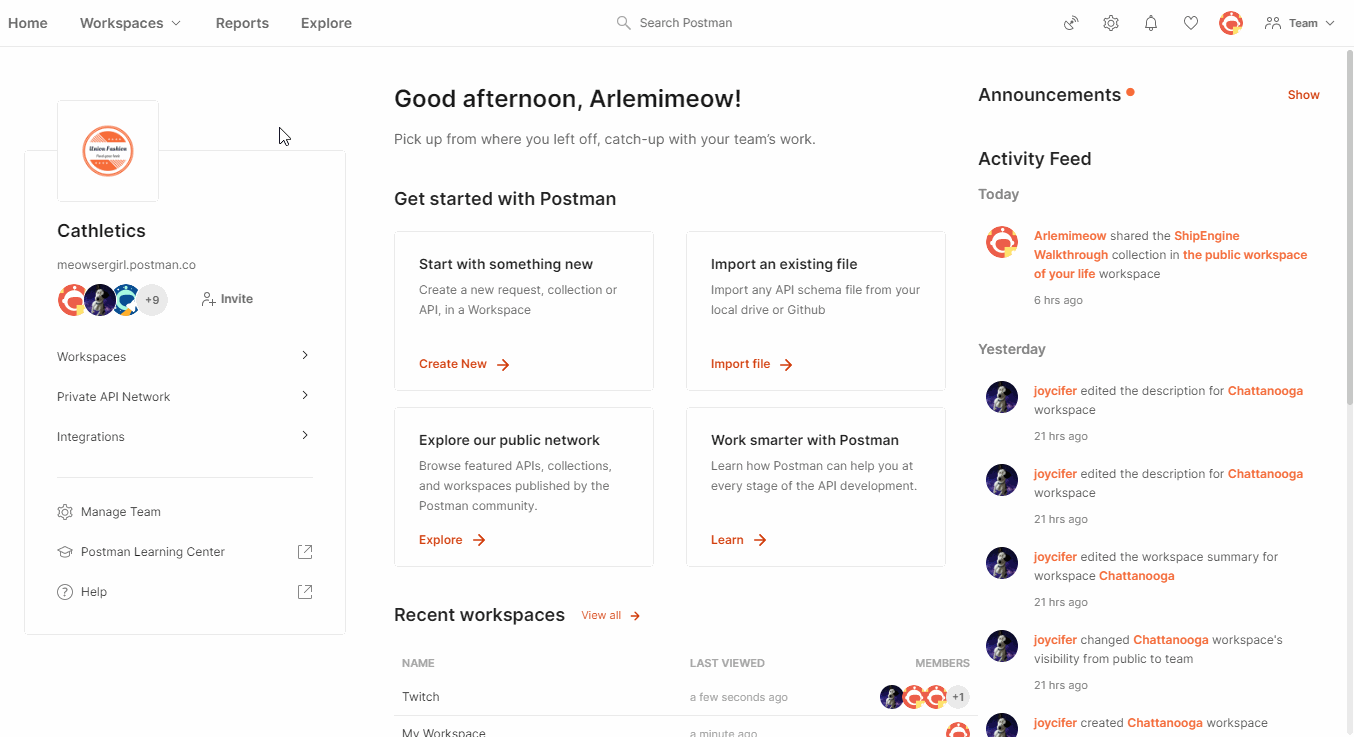
Search and discovery
Universal search
Postman v8 allowed us to introduce a new universal search so you can find things wherever they are in Postman. With the new search, you can filter by type of element (workspace, collection, API, team), as well as select the scope in which you want to do the search (personal, team, or public). Additionally, you can also search for keywords and let the search suggestions do the rest!
It’s worth noting that the search feature has already evolved a lot since it was first introduced, and you can read more about this in Postman Head of Product Engineering Akshay Deo’s blog post, “Evolving Postman’s Universal Search Feature.”
Recommended related collections
We introduced a new collection-recommendations feature to help you discover and work with public APIs quickly and more easily, right where you need them. Now, when you are working on a request, you’ll see a list recommending public collections related to your request in the right context bar.
New Private API Network
As we saw the usage of the Private API Network increase, we made some UX improvements to make it easier to share APIs within your team like filtering, sorting, folder organization, and GitHub import. The new version of the Private API Network also provides reports to make it easier to govern your internal API landscape by providing insights into the APIs in it. This feature is only available on the Enterprise plan.
Collaboration
Collaboration has always been at the heart of Postman, and this was even more true this year when we announced unlimited collaboration for small teams in Postman. Let’s have a look at the product improvements which supported collaboration among teams of all sizes.
User management with SCIM
We added support for provisioning and deprovisioning users on your Postman team using SCIM (System for Cross-domain Identity Management). With this feature, you can efficiently deploy Postman at scale across your organization and manage your team users via an identity provider (IdP) or directly via the Postman SCIM API. This feature is only available on Professional and Enterprise plans.
User groups
Teams can now organize their members into functional groups to mimic their organizational structure and easily manage roles for all the members of a group. You can assign specific roles directly to these groups, enabling access to specific resources for all the members of the group.
Workspace roles
We introduced three new workspace-level roles which define what a user can do in a workspace: Admin, Editor, and Viewer. As we were seeing more and more companies using Team workspace to collaborate internally, and many different users creating entities in the same workspace, it made sense to add a workspace-level role that allows for easier management of it.
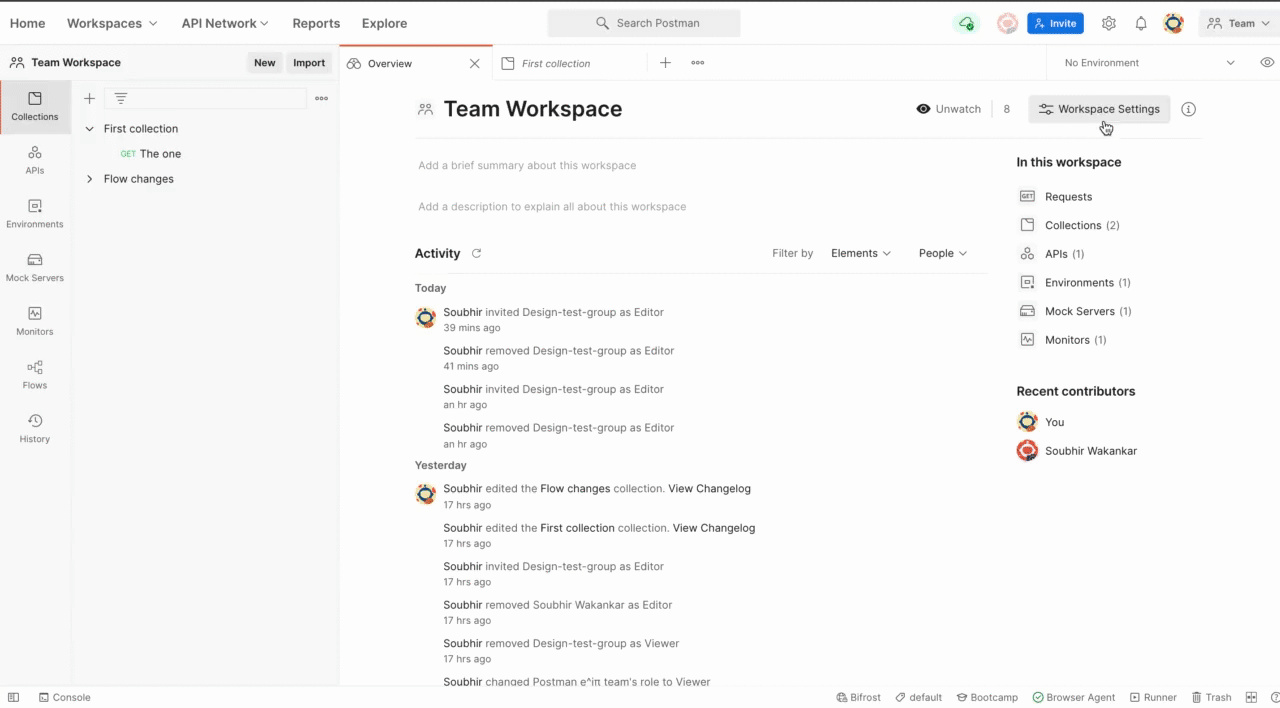
Protocols
This year marked a turning point for protocols in Postman as we expanded beyond an HTTP API client and added support for an asynchronous protocol for the first time since the infancy of the product.
WebSocket APIs
Support for the WebSocket protocol is one of the most popular feature requests we’ve received from the Postman community. The protocol enables continuous two-way communication between your browser and the web server, and for Postman, it has meant the advent of a whole new paradigm of asynchronous APIs.
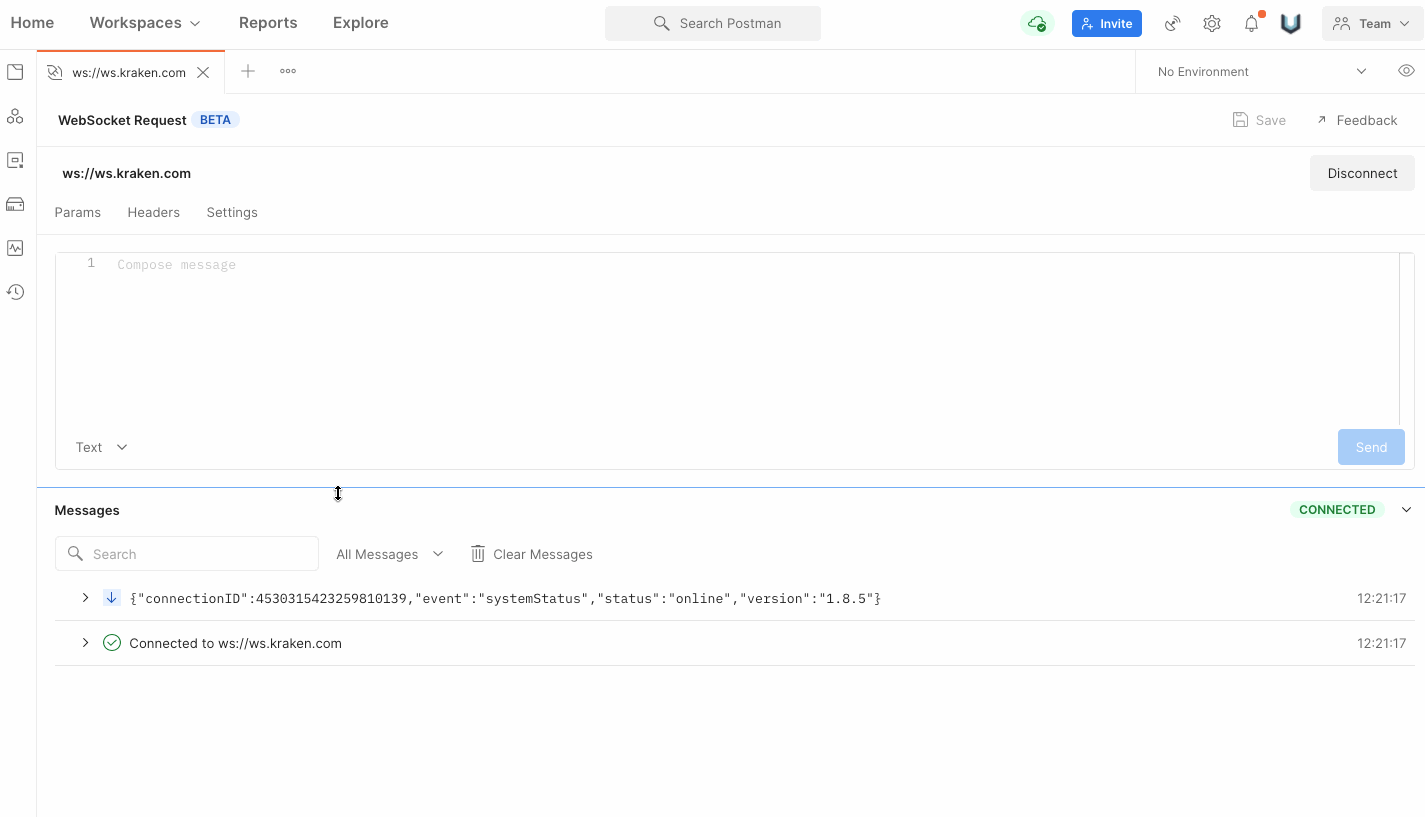
Socket.IO
Building on the early feedback from users after the WebSocket release, we released first-class support for Socket.IO in Postman. Socket.IO is one of the most popular libraries that enables real-time, bidirectional, and event-based communication between web clients and servers, using WebSockets under the hood.
WSDL support
Solving one of the oldest open feature requests on our issue tracker, we added support for WSDL (Web Services Description Language) files. This means you can leverage Postman’s runtime, lifecycle management, and collaboration features for your WSDL-described SOAP service.
Security and governance
Security and governance should be a consideration for every step of your API journey. In 2021 we focused on giving you the right tools to achieve that, from the moment you start designing your API, to the moment you share it publicly.
Security warnings
When writing your API definition using the API Builder, we now scan for potential loopholes and surface them to you as security warnings. This allows you to tackle these issues from the API design phase instead of when the API has already been deployed.
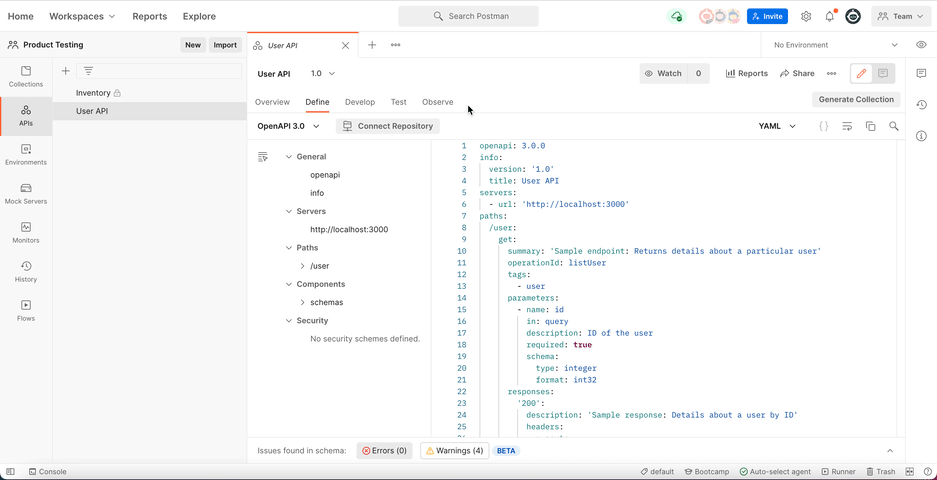
Postman security scans
As more and more people use Postman to publicly share their APIs or collections, we introduced a Token Scanner that checks all information that is made public against a list of well-known sensitive tokens (e.g., Google API Key, Slack Access Token) and warns you by email, and through in-app notification in case of a potential leak.
Manage public elements
We introduced a new dashboard to see and manage all of your team’s public elements (workspaces, documentation, and collection links). This feature is only available on the Enterprise plan.
Postman reports for enterprises
We redesigned our entire reporting space to not only allow users to track and monitor key metrics related to APIs, teams, security, and Postman usage, but also give them the ability to dive deeper into their data for taking relevant actions. Apart from making reports faster, we’ve also changed the way they look and feel to keep them more aligned with the Postman experience. This feature is only available on the Enterprise plan.
Postman Enterprise App
Postman Enterprise Application is a new distribution of Postman’s desktop application that offers new controls and capabilities to help deploy Postman at enterprise scale. This new app is available as an MSI package for Windows and supports silent installation, system-wide installation, and additional configurations to control how and where Postman is installed on the device. This feature is only available on the Enterprise plan.
Integrations
With the release of Postman v9, aka the new Postman API Platform, in November 2021, we thought about how Postman can fit in the wider API ecosystem, and how it can help build an API-first world. And one of the answers to that was…integrations! So we added integrations to a few of your favorite tools, now available from the API Builder:
Source code management
We added support for GitHub, Bitbucket, and GitLab. You can link branches and tags from your repository with API versions in Postman. This lets you keep schemas and collections in sync and iterate on the API definition in Postman as you code in your repository with full version control capabilities.
Continuous integration and continuous delivery
We added support for continuous delivery tools, like Travis CI and CircleCI, so you can link your CI/CD pipelines to your API tests. Your team will be able to see recent builds for your pipelines across all branches and re-trigger failed runs.
API gateways
We added support for the AWS API Gateway, which means you can view recent deployments and events, and get a one-click link to your logs and deployments.
Application performance monitoring
We added support for APM tools like New Relic; you can link your API and get Apdex scores, slow transactions, and more observability insights from your APM tool for your APIs—all in the API Builder.
…And more!
WYSIWYG documentation editor
We released a new WYSIWYG description editor that simplifies authoring descriptions in your documentation considerably—no need to use markdown or preview your changes.
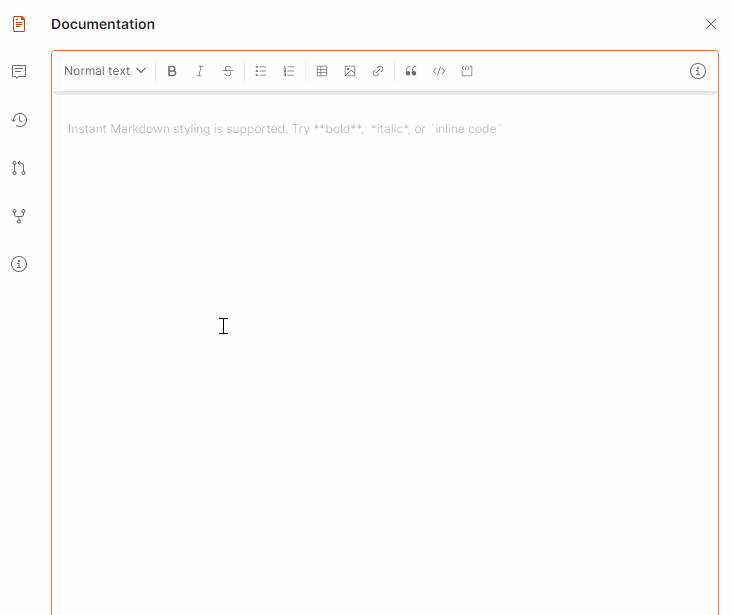
Postman Flows
Did I keep the best for last? That is for you to say, but this is definitely one of my personal favorites! Postman Flows is a low-code API workflow builder that lets you connect APIs logically. Use Flows to chain requests, handle data, and create real-world workflows right in your Postman workspace. Check out the video below to see a real-life example of using Flows.
And that’s it…for now. We hope you enjoyed reading through some of the major features we released in 2021 and that maybe you discovered some that you’ll start using today. Test them out and let us know in the comments below which new feature was your favorite and why.
Want to learn more about Postman features? Check out these resources:
- Release Notes page: for an extensive list of features released in the past
- Postman Public Roadmap: for insights into upcoming releases
- Postman issue tracker: for opening a new issue if you have any feature request—we’re always listening!
Thank you all for being part of the amazing Postman community, and we’ll see you in 2022 for even more!
Technical review by Joyce Lin

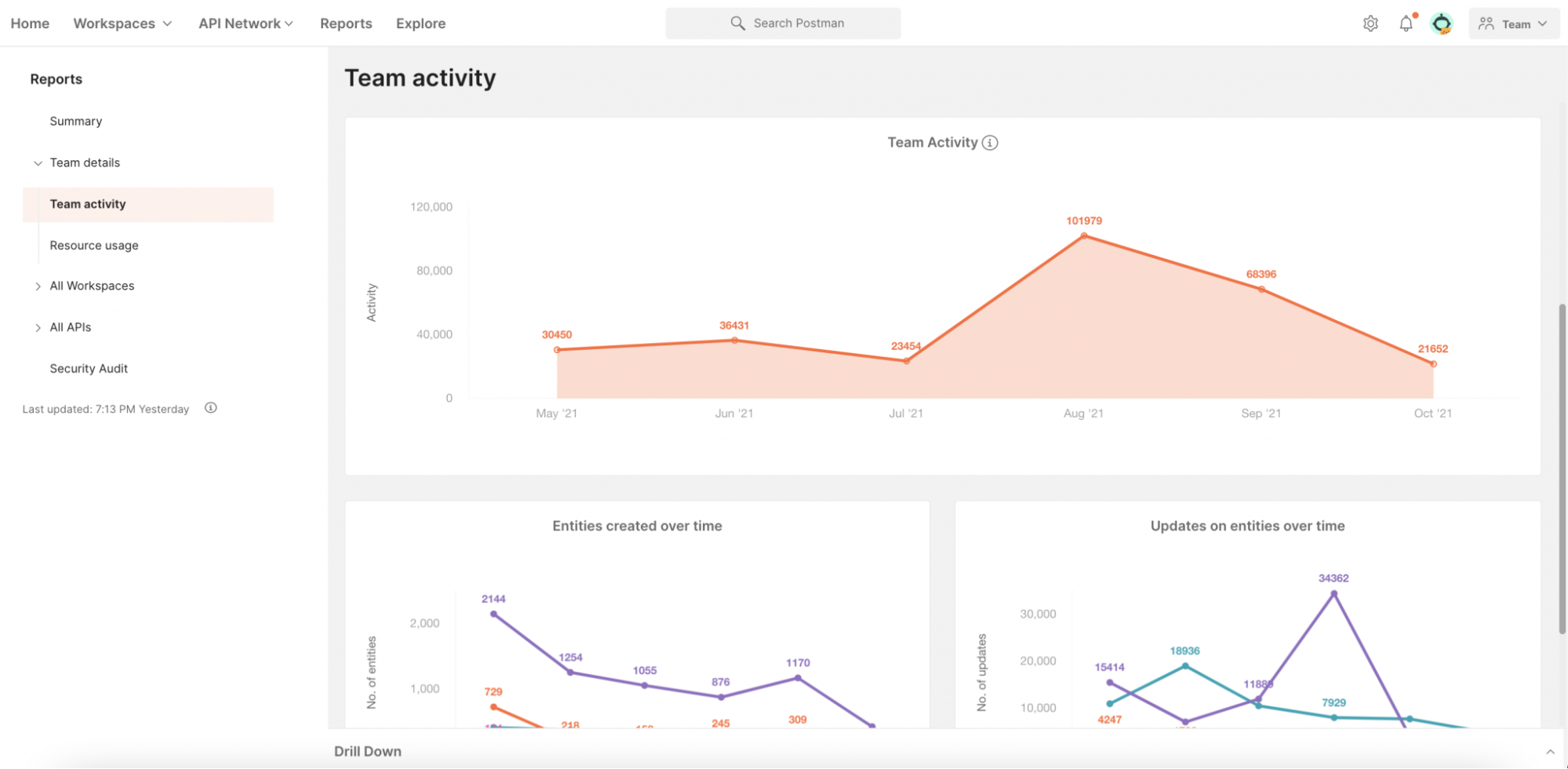
It was a remarkable year, congrats!
It would be great for 2022 if the Apple silicon version of postman would b the default one, so we don’t have to wait 3-6 months for the new features!
Thanks! 🙂